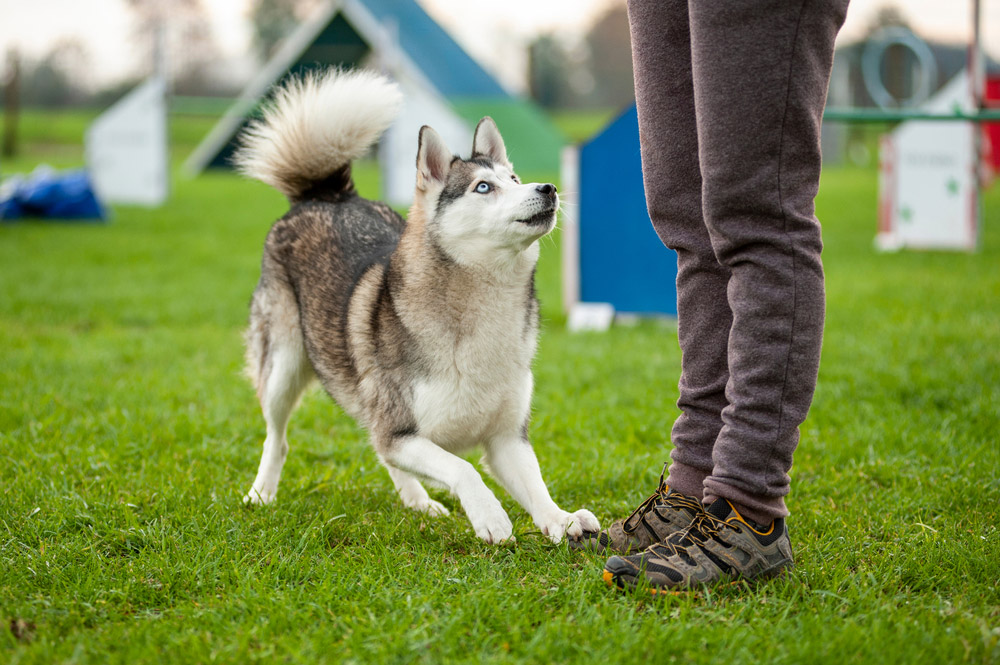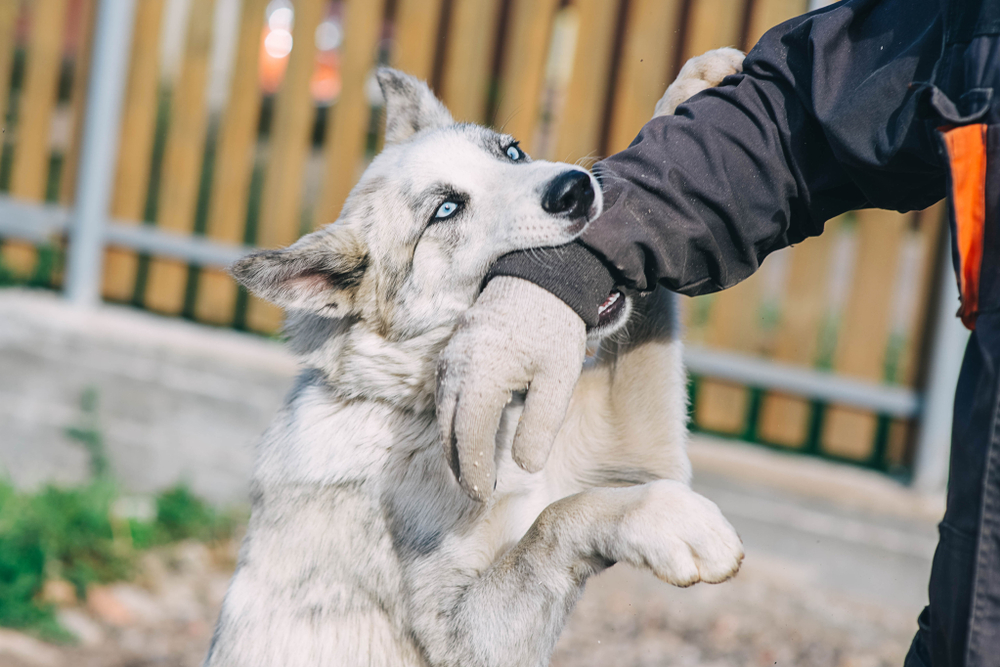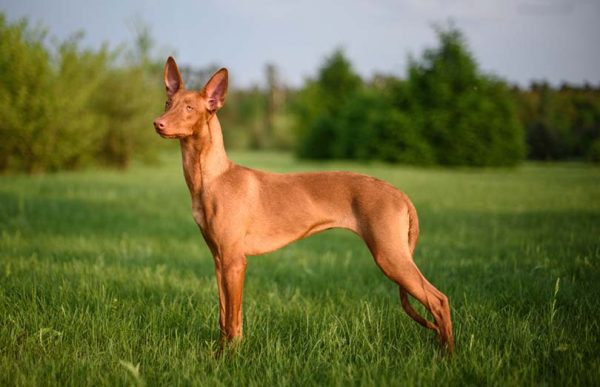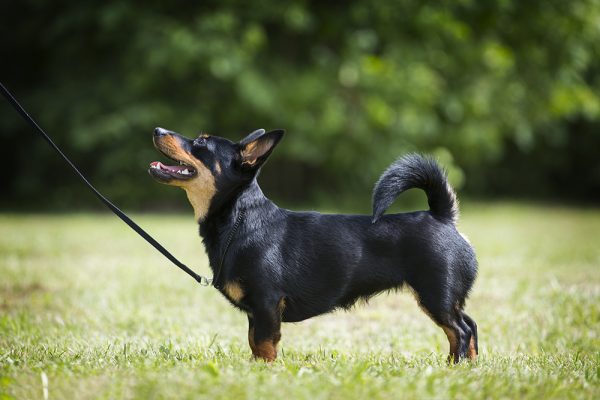In this article
The Husky is a domesticated dog that closely resembles a wolf, so people imagine that it can have a pretty powerful bite force. Unfortunately, the Husky has not had their bite force scientifically measured; very few domesticated dogs have.
If you perform an internet search on the bite force of dogs, you will likely come across many different sites that give bite force figures for a long list of breeds, ranging from 200 to 743 PSI. However, there have been no studies on the bite force of these dogs, and there is no scientific evidence that supports these results. Additionally, bite force is more commonly measured in Newtons (N) rather than Pounds per Square Inch (PSI).
We extrapolate our figures from a study performed using two police dog breeds: the German Shepherd and the Belgian Malinois.1 While those two police dogs are slightly bigger than the Husky, the anatomy and physiology of their head shapes and jaw musculature are quite similar. Based on the median bite force of 360.4 N for the German Shepherd and 247 N for the Malinois, we estimate the bite force of the Husky to be approximately 220 to 240 N, less than half that of a wolf.

How Is Bite Force Measured?
Measuring the bite force of an animal is not easy. Here are some of the ways it can be done:
- In vivo
- In vitro
- In silico

In vivo is the electrical stimulation of jaw adductor muscles on anesthetized dogs. However, this method does not show what the bite force could be in a natural setting.
In vitro uses mechanical equations for the mandible, skull structure, and jaw muscles to calculate bite force.
In silico is often used for extinct species because they use a computed model of the skull to estimate the bite force.
One study measured bite force directly by using a transducer, a hollow steel rod with a strain gauge wrapped in rubber tubing. The scientists also covered it in beef-flavored rawhide to encourage the dogs to bite.
However, the problem with the transducer method was that it depended on whether or not the dog was eager to bite and did not give us a representation of the bite capacity in an aggressive or attack situation. The results varied greatly, so while it gave people some idea about bite force, it does not prove exact numbers. In addition, not all breeds were tested.
The difficulty in testing bite force explains why there is little to no reliable data on the bite force of different breeds.

Applying 240 Newtons: What Does That Actually Mean?
The best way to understand a Husky’s bite force (which we estimate is around 220 to 240 N) is to compare it to other animals. When people think of a Husky, they often think of a grey wolf (Canis lupus). It is estimated that the grey wolf has a bite force of 590 N, well over two times more than the Husky.
What about some other carnivores? Let’s have a look!

| Animal | Bite force at the canines (N) | Bite force at the carnassials (N) |
| European lynx (Lynx lynx) | 213.0 | 329.7 |
| Cheetah (Acinonyx jubat) | 325.6 | 475.1 |
| Jaguar (Panthera onca) | 879.5 | 1,348.0 |
| Lion (Panthera leo) | 1,198.6 | 1,833.1 |
| Tiger (Panthera tigris) | 1,234.3 | 1,839.0 |
As you can see from this list, bite force varies based on the canines (fangs) and the carnassials (large molars/premolars). But this still gives you an idea of the power from just one bite.

Final Thoughts
Will a Husky’s bite hurt? Absolutely! But that 220 to 240 N bite force is going to be distributed through the entire surface of the mouth and whatever they’re biting. Also, this is an estimation of the expected Husky bite force based on their head shape and overall weight, compared with that of their wild counterparts and other dog breeds. Measuring bite force is an inexact science, and not all dog breeds have been tested formally.
Featured Image Credit: Nigmatulina Aleksandra, Shutterstock




















